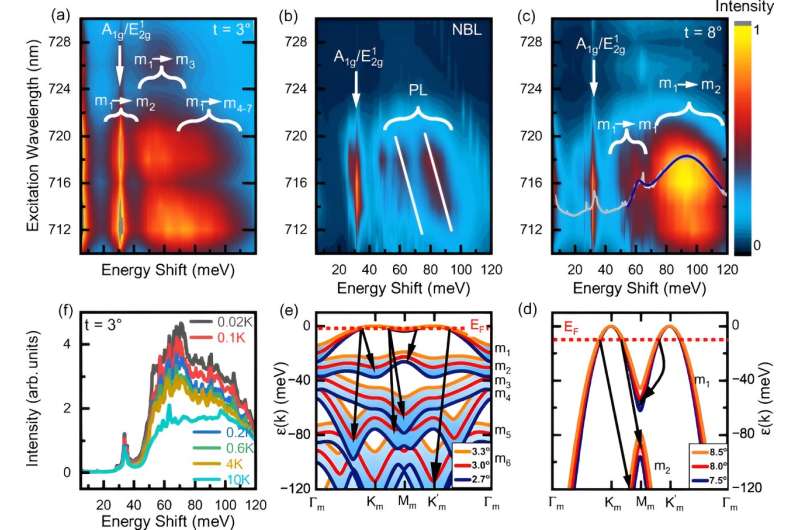This article has been reviewed according to Science X's editorial process and policies. Editors have highlighted the following attributes while ensuring the content's credibility:
fact-checked
peer-reviewed publication
trusted source
proofread
Physicists control electronic properties of moiré crystals

If you make a material thinner and thinner, at a certain point it undergoes a seemingly miraculous transformation: A two-dimensional material that consists of only one or two layers of molecules sometimes has completely different properties than the same material when it is thicker.
A research team led by physicist Prof. Ursula Wurstbauer from the University of Münster is investigating how the properties of two-dimensional crystals can be controlled so that they behave like an insulator, an electrical conductor, a superconductor or a ferromagnet, for example. To do this, the scientists utilized the interactions between the charge carriers (electrons) and the so-called energy landscape of the crystals.
Now, for the first time, the team has generated and quantitatively demonstrated collective excitations of the charge carriers within different energy landscapes. The study, which has been published in Physical Review Letters, advances our understanding of the electronic characteristics of crystal structures and reveals ways to influence them.
To obtain the different properties, the scientists placed two layers of a two-dimensional crystal on top of each other and twisted them slightly against each other. This twisting creates geometric patterns, so-called moiré patterns—similar to two layers of thin curtain fabric laid on top of each other.
These patterns characterize the energy landscape and force the electrons to move much more slowly. These changes result in the electrons interacting intensively with each other, which can lead to so-called strongly correlated behavior.
"The electrons 'feel and see' each other, and it happens that a moiré lattice site in the neighborhood of an electron cannot be occupied or can only be occupied with a high energy input due to repulsion according to Coulomb's law," explains Wurstbauer. "The correlations are formed depending on the pattern and the number of electrons."
She uses the "wild" dancing in a disco as an illustration of the different behavior of electrons compared to the orderly dance patterns of standard dancing. "The way in which the electrons 'dance' or can move in the moiré patterns depends strongly on the pattern, the number of charge carriers and the resulting energy landscape."
The properties of these material systems are not only interesting in basic research, emphasizes Wurstbauer. "They may offer innovative application possibilities in quantum technology or for the realization of so-called neuromorphic components and circuits."
The team, which included scientists from the University of Hamburg, RWTH Aachen University and the Max Planck Institute for the Structure and Dynamics of Matter in Hamburg as well as Wurstbauer's research group, combined the experimental work with theoretical analyses.
They prepared different two-dimensional crystals (graphene, molybdenum diselenide and tungsten diselenide) and analyzed the samples using optical spectroscopy methods at cryogenic temperatures ("resonant inelastic light scattering spectroscopy").
More information: Nihit Saigal et al, Collective Charge Excitations between Moiré Minibands in Twisted WSe2 Bilayers Probed with Resonant Inelastic Light Scattering, Physical Review Letters (2024). DOI: 10.1103/PhysRevLett.133.046902. On arXiv: DOI: 10.48550/arxiv.2310.14417
Journal information: Physical Review Letters , arXiv
Provided by University of Münster





















